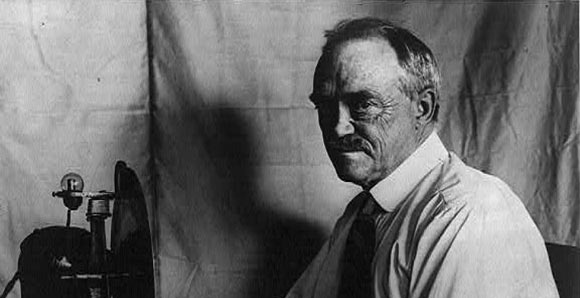Charles Francis Jenkins invented the “Television” and “Movie Projector”
Charles Francis Jenkins was a prolific American inventor of the twentieth century. He is widely credited to be one of the inventors of mechanical television and an early pioneer in the field of motion pictures and cinema. Jenkins was born in Ohio in 1867 and grew up and was educated in Indiana. Even as a child, Jenkins took a profound interest in technical knowledge and read as many books and magazines on the subject as he could get his hands on. At the age of 23, he moved to Washington D.C. where he began working as a secretary at the US Life Saving Services (today known as the US Coastguard).
It was at this time that he began to be interested in experimentation and research that would later lead to the development of motion pictures. Jenkins began to take more and more interest in the field, which led him to quit his job and focus solely on invention. He established a research laboratory in Washington along with a few friends and began working towards the development of a device called the “Phantoscope”. This was an early version of a motion picture camera which is now found in most cinemas today.
By 1924 he had finished construction of his device and demonstrated it in front of his friends and family at his cousin’s jewelry store in Indiana. This was arguably the first movie show in history. The images showed a dancer’s performance which Jenkins projected on to the wall. He later improved this device in collaboration with Thomas Armat, who was Jenkins’ fellow student at the “Bliss Electrical School” in Washington D.C. The two of them managed to get a patent for it in 1897. They later sold these rights to Thomas Edison who marketed and popularized its use in the development of motion pictures – which is why Edison is sometimes mistakenly assumed to be the inventor of motion picture equipment.
Charles Francis Jenkins also made significant contributions towards the enhancement of television technology. In 1925, he developed and demonstrated a synchronized transmission of images and sound to the public, for which he was issued a patent titled “Transmitting Pictures Over Wireless” on June 30, 1925. He set up the Jenkins Television Corporation in 1928, which was the first television broadcasting station in the U.S. This station, named W3XK, transmitted black and white images five nights a week. This corporation was later liquidated and sold. With the advent of electronic television, further development in mechanical television were stopped.
Amongst Jenkins’ other initiatives was the establishment of a Society of Motion Picture Engineers which is a highly respected worldwide organization to date. He wrote 3 books Handbook for motion picture and stereopticon operators (1908) , Vision By Radio, Radio Photographs, Radio Photograms (1925) and The Boyhood of an Inventor (1931) along with several articles in scientific journals and magazines. He held over 400 patents in his lifetime and was awarded many honors including the “Elliott Cresson Medal” in 1897 and the “John Scott Medal” in 1913. There is also a plaque commemorating the place where he demonstrated his first “movie” to his friends and family in Indiana. A prestigious television award known as the “Charles F. Jenkins Lifetime Achievement Emmy Award” has been named in his honor. Jenkins died in 1932 at the age of 67 and is buried at Rock Creek Cemetery in Washington D.C.
